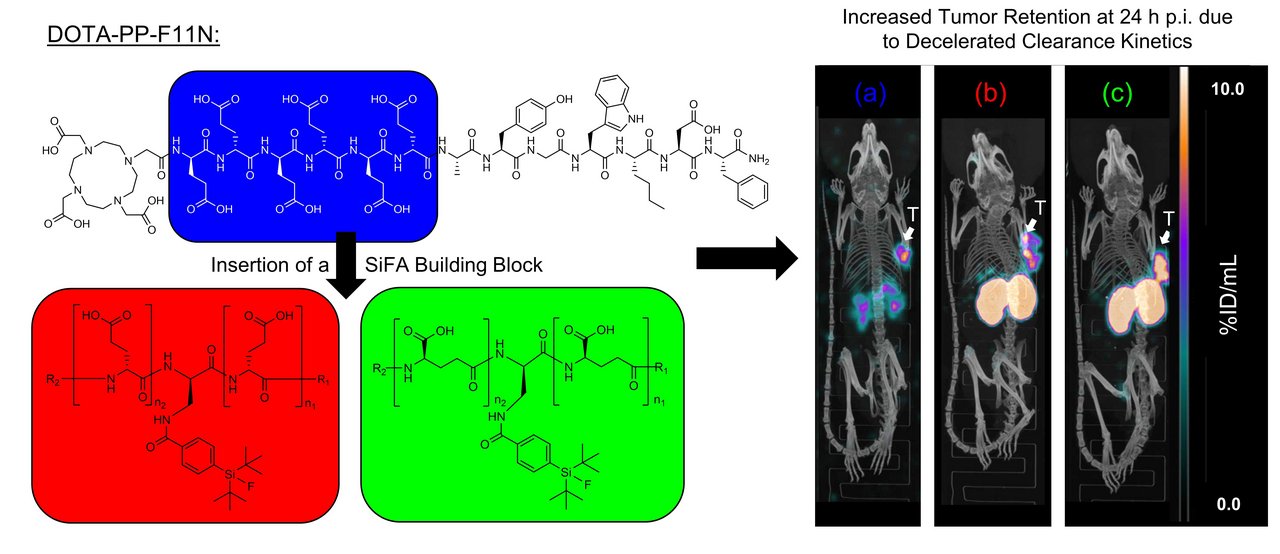Introduction of a SiFA Moiety into the D-Glutamate Chain of DOTA-PP-F11N Results in Radiohybrid-Based CCK-2R-Targeted Compounds with Improved Pharmacokinetics In Vivo

Günther T, Holzleitner N, Di Carlo D, Urtz-Urban N, Lapa C, Wester HJ
25.11.2022 [Original Artikel]
In order to enable 18F- and 177Lu-labelling within the same molecule, we introduced a silicon-based fluoride acceptor (SiFA) into the hexa-D-glutamate chain of DOTA-PP-F11N. In addition, minigastrin analogues with a prolonged as well as γ-linked D-glutamate chain were synthesised and evaluated. CCK-2R affinity (IC50, AR42J cells) and lipophilicity (logD7.4) were determined. Biodistribution studies at 24 h post-injection (p.i.) and µSPECT/CT imaging at 1, 4 and 24 h p.i. were carried out in AR42J tumour-bearing CB17-SCID mice. CCK-2R affinity of (R)-DOTAGA-rhCCK-1 to 18 was enhanced with increasing distance between the SiFA building block and the binding motif. Lipophilicity of [177Lu]Lu-(R)-DOTAGA-rhCCK-1 to 18 was higher compared to that of [177Lu]Lu-DOTA-PP-F11N and [177Lu]Lu-CP04. The respective α- and γ-linked rhCCK derivatives revealing the highest CCK-2R affinity were further evaluated in vivo. In comparison with [177Lu]Lu-DOTA-PP-F11N, [177Lu-]Lu-(R)-DOTAGA-rhCCK-9 and -16 exhibited three- to eight-fold increased activity levels in the tumour at 24 h p.i. However, activity levels in the kidneys were elevated as well. We could show that the introduction of a lipophilic SiFA moiety into the hydrophilic backbone of [177Lu]Lu-DOTA-PP-F11N led to a decelerated blood clearance and thus improved tumour retention. However, elevated kidney retention has to be addressed in future studies.